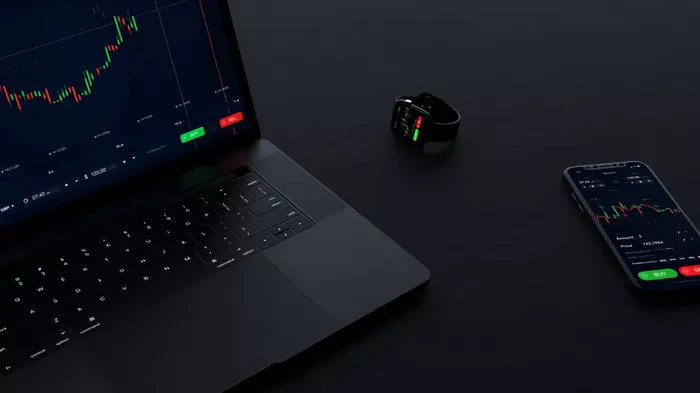Foreign exchange (FX) swaps are essential financial instruments used in the global currency markets. They facilitate liquidity and help manage currency risk for businesses and investors. Understanding FX swaps is crucial for anyone involved in international finance. This article will explore what FX swaps are, how they work, and provide a detailed example to illustrate their practical applications.
Understanding FX Swaps
What Is an FX Swap?
An FX swap is an agreement between two parties to exchange a certain amount of one currency for another currency, with the obligation to reverse the exchange at a specified future date. This financial instrument helps parties manage currency exposure and provides access to foreign currency liquidity.
How Do FX Swaps Work?
In an FX swap, two transactions occur. The first transaction involves the exchange of principal amounts in two different currencies at the current spot rate. The second transaction takes place at a predetermined future date, where the parties reverse the initial exchange at a pre-agreed rate.
Key Components of FX Swaps
Several key components make up an FX swap. These include:
Notional Amount: This is the amount of currency being exchanged.
Spot Rate: The current exchange rate at which the currencies are exchanged initially.
Forward Rate: The exchange rate agreed upon for the future transaction.
Maturity Date: The date when the currencies will be swapped back.
The Purpose of FX Swaps
Managing Currency Risk
One of the primary purposes of FX swaps is to manage currency risk. Businesses that operate in multiple countries often face fluctuations in exchange rates, which can impact their profitability. By using FX swaps, these companies can lock in exchange rates and minimize the risk of adverse currency movements.
Accessing Liquidity
FX swaps also provide liquidity to participants in the foreign exchange market. Financial institutions and corporations can use these instruments to obtain the necessary currency for operations without having to rely solely on cash reserves. This is particularly useful in times of market stress when liquidity may be scarce.
An Example of an FX Swap
Scenario Overview
Let’s consider a hypothetical scenario involving two companies: Company A based in the United States and Company B based in Europe. Company A needs euros to pay its suppliers in Europe, while Company B requires U.S. dollars to fund its operations in the U.S. Both companies can benefit from entering into an FX swap agreement.
Initial Exchange
Assume Company A needs €1,000,000 and agrees to exchange it for $1,200,000 with Company B at the current spot rate of 1.20 (1 USD = 0.83 EUR). This initial transaction allows Company A to acquire euros to fulfill its payment obligations.
Agreement on Future Rate
The two companies agree to reverse the transaction in three months. For this future transaction, they set a forward rate of 1.22. This rate reflects market expectations and factors in interest rate differentials between the two currencies.
Reversal of the Transaction
Three months later, Company A will return the €1,000,000 to Company B and receive $1,200,000 back at the agreed forward rate of 1.22. This means Company A will effectively pay $1,224,000 for the euros at the time of reversal. This arrangement allows both companies to meet their currency needs without exposing themselves to immediate market fluctuations.
Benefits of Using FX Swaps
Flexibility
One of the significant benefits of FX swaps is their flexibility. Companies can negotiate terms that suit their specific needs, including amounts, rates, and maturities. This flexibility helps tailor financial strategies to meet operational requirements.
Cost-Effectiveness
FX swaps can be more cost-effective compared to traditional borrowing methods. Companies can avoid higher interest rates and fees associated with loans by using swaps to manage their currency needs.
Hedging Against Currency Fluctuations
By locking in exchange rates, FX swaps provide a hedge against currency fluctuations. This stability is crucial for financial planning and budgeting, as it allows companies to predict their costs more accurately.
Considerations and Risks
Market Risks
While FX swaps can mitigate certain risks, they are not without their own. Market fluctuations can still affect the values of currencies, and unexpected changes can lead to financial losses if not managed carefully.
Credit Risk
There is also credit risk involved in FX swaps. If one party defaults on the agreement, the other party may face losses. To mitigate this risk, companies often conduct thorough credit assessments of their counterparties before entering into swaps.
Complexity of Terms
Understanding the terms and mechanics of FX swaps can be complex. Companies must ensure they have the necessary expertise or consult financial advisors to navigate these instruments effectively.
Conclusion
FX swaps are powerful tools in the world of foreign exchange. They provide companies with the ability to manage currency risk and access necessary liquidity in an efficient manner. By understanding how FX swaps work and analyzing real-world examples, investors and businesses can make informed decisions regarding their currency needs. Whether you are a large multinational corporation or a small business engaged in international trade, leveraging FX swaps can enhance your financial strategy and protect your bottom line. As with any financial instrument, careful consideration of the risks and benefits is essential for successful implementation.
Related topics:


